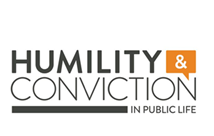Opacity and trust in institutions
12 June 2023
A typical lament of those, like academics, who work in large institutions is that so many of the decisions and operations of institutional life are opaque. This is often expressed in reports of decisions, priorities, and rationales being ‘hard to see’. “I don’t see how they got from that data to that decision”, as one of our colleagues grumbled. Others sense secret layers of activity and fear that’s where the real power lies. When engaging with institutions, we often run into these obscurities.
Institutional opacity
In a recent article, we call this institutional opacity and suggest it captures an important fact about our relationships to social institutions. It occurred to us, originally, when reflecting on how patients typically explain their interactions with healthcare systems, like the NHS. However, we think opacity can be true of any large, complex, elaborately structured, and usually highly specialised social institution. Examples include the legal system, social care systems, and educational institutions.
We think that institutions are opaque when they have become resistant to epistemic assessment and understanding that are essential to the users of these institutions (patients, students, defendants). As patients often report, there is a frustrating sense of not being able to see how a decision is made. The structures, rules, and internal arrangements of the institution are opaque – one can’t see them, and if they are visible, they are often difficult to understand due to jargon, internal norms, and institutional cultures. As a result, the user of an institution can’t learn to operate effectively in such opaque environments. Processes are unclear, outcomes seem mysterious, and requests for information will be ‘passed up the chain’ and then vanish.
Institutions can be more or less opaque, and their degrees of opacity can change over time. Old-timer colleagues may fondly recall – accurately or not – when their university’s activities were more transparent – simpler and more open to scrutiny. Institutions could be locally or globally opaque. The whole institution may be opaque, wholly clouded in an obscuring fog, or it may just be the finance department, or executive levels.
Institutions can also be differentially opaque, and this adds moral dimensions to the phenomenon. An institution could be opaque to its agents (nurses, therapists, porters) the people who work for it; or its users, those who interact with the institution, out of need or legal command, to access its services and resources. Importantly, the users often have no choice but to engage with the institution due to compulsory education, court orders, or simply being ill and requiring healthcare. Similarly, outside groups like investigative journalists and charities could also find an institution opaque. In these cases, they find that their ability to investigate and scrutinise is highly obstructed by the opacity.
It is true that some degree of opacity is practically unavoidable. Institutions can be large, hierarchical, and compartmentalised. They have distinct norms, routines, and rhythms which take time to master. An important feature is how an institution appears to a user and to an agent: the more opaque the institution, the larger the gap between the two perspectives. Related features include institutionally stipulated styles of interpersonal interaction, including the effectual ways of seeking information. One of our colleagues advised us that “knowing how to nose around” is a vital skill of institutional life. But it is certainly not a skill many have, and one that is painfully absent amongst the groups most likely to require social care, healthcare, or be involved with the criminal justice system, for example. Moreover, institutions tend to undergo periodic restructurings which alter the structures one was trying to understand, and to impose redefinitions of roles and responsibilities, as well as changes to terminology (for example, the change from ‘psychiatric patient’ to ‘client’ or ‘service user’). In most cases, institutions also have a language – terminology, acronyms, and abbreviations, supported by informal idiolects. British academia is a matter of REF, TEF, QAA, NSS. For the uninitiated such terms will render conversations utterly opaque.
Such features often make it hard to ‘see’ and understand the institution’s genuine arrangements and operations. Recall Wittgenstein’s remark that a philosophical problem has the form ‘I do not know my way around.’ When the institution is opaque, it becomes evermore difficult to engage in epistemic activities – such as investigation, critical evaluation, and data-gathering. What is opaque, depending on context, can include specific decisions and actions, or even whole chains of decision-making – ‘all along the line’ or at specific key stages. Opacity could also affect patterns of investment and prioritisation, or disinvestment and deprioritization and other more general processes. How does one make x happen? In a worst-case scenario, everything about the institution is opaque to practically everyone who has some contact with it. An example of this would be a highly corrupt, secretive, and unstable institution in which arrangements are ad hoc and informal rules change often.
The costs of institutional opacity
Institutional opacity characterises situations where the institution—or aspects thereof—has become increasingly resistant to epistemic assessment and understanding. An obvious solution is to increase transparency, the counterpart to opacity, and certainly transparency can be a valuable thing. However, as critics like Thi Nguyen have noted, an emphasis on transparency is not the panacea which it seems to be. In some cases, transparency could bring problems of their own, like rendering agents constantly surveillable. Moreover, enhancing transparency often entails trade-offs which should be carefully reckoned. After all, seeing and knowing is a lot of work, much of it dull and difficult. Often, we don’t want constant sight of something, we only want to be able to see and assess if needs be, like when our expectations are disappointed, or actions suddenly become puzzling—what Charles Sanders Peirce called “the irritation of doubt”. Sometimes, I don’t want to see how things are doing just as long as I trust they are being done well.
To get a better sense of what to do about opacity, it might help to get a clearer sense of its problems. Doubtless there are many, but we will consider two under the headings of ‘impaired epistemic agency’ and ‘estrangement and cynicism’.
Epistemic agency
First of all, institutional opacity imposes higher epistemic demands on people who work for or deal with the institution. One needs new and enhanced kinds of confidence, understanding, investigative skills and tricks, and communicative competences. Learning to see through opacity is hard work while also being additional work. Some clearly enjoy this kind of work, while most find it exhausting. In many cases, people simply give up.
A second problem: institutional opacity will tend to impede individual epistemic agency. When working in an institution, we need a confident grasp of its social and epistemic norms – what to say, how to make requests, when to do certain things, which priorities to consider, and so on. Insofar as we know these things – confidently and with assurance – we can go about our work well enough. Unfortunately, opacity blocks that understanding and confidence. The relevant rules, norms, standards, and decision-making procedures are obscure. I cannot identify or work out the styles of comportment that would let me perform as a confident, credible person. Unable to see my way around, I stumble about helplessly. These effects will disproportionately affect social groups, especially those already suffering epistemic deficits. Refugees, ill persons, those with learning disabilities or educational disadvantage, those for whom English is not their first language and many others will find the obstacles of opacity intensify their already difficult epistemic predicament. We call these groups and individuals ‘vulnerabilised’ and demonstrate, in our paper, how the encounter between vulenrabilised persons and opaque institutions can further vulenrabilise and harm these persons. So there is an important social justice and moral dimension to institutional opacity.
In some cases, this disproportionate disadvantaging feeds a suspicion that the opacity is intentional and not inadvertent. This brings us to a second set of problems caused by opacity.
Estrangement and cynicism
Institutional opacity often encourages a sense of estrangement. Over time, the institution starts to seem increasingly hostile, its decisions obscure, its reasoning impenetrable. One can no longer see and survey the institution. It becomes a source of acute confusion and frustration. One becomes alienated, estranged, in ways that cause a deterioration in our relationship to it. An obvious symptom is distrust – talk of a ‘crisis of trust’ is a cliché of our times, even if the distributions of distrust are complicated. One can see why opacity can feed distrust. If I cannot reliably tell what the institution’s commitments are then I cannot know whether to trust it. I need to be able to determine if an institution is trustworthy, an activity that is rendered increasingly difficult by the phenomenon of opacity.
Estrangement feeds a fourth problem: a form of cynicism. In some cases, opacity is taken, rightly or not, as a product of deliberate acts of opacification. Institutional restructurings are often interpreted in this way – a reshuffling of roles, duties, and titles, intended to conceal stealth distributions of powers, major cuts, or plans to break chains of responsibility. Granted, opacity grows as institutions grow larger and more complex. Sometimes, though, we sense the opacity is being deliberately created by those whose interests it serves. In these cases, opacity feeds cynicism, the conviction that the actual motivations, reasons, and values of an institution are different to and also morally and epistemically lesser than its professed ones. The hotel says it wants us to reuse our towels for the sake of environmental sustainability, but it’s really to reduce operating costs—reducing costs is not a bad motivation, but is much less noble than the environmental one. Opacity conceals the actual motivations and values that inform institutional decisions and cynicism can then intervene to fill that explanatory gap. If people are unable to scrutinise your reasons, they can suspect it’s because the reasons wouldn’t survive scrutiny. Opacity is clearly advantageous for those who want to operate according to reasons or values unacceptable to others in and beyond their institution. It can also conceal inactivity and enable delaying strategies.
If this is right, institutional opacity is one important obstacle to sustaining institutional trust. It also calls into view an important dimension of our epistemic relationship to the institutions on which we depend and which have immense power over the direction and quality of our life. There is more to say, too, not least about the potential positive uses of opacity or effective strategies for countering opacity. If I can’t see how to navigate a confusing institution, I could seek a guide – a vade mecum – who could lead the way. But acting as an epistemic guide is more work, and needing one is a further strain. For all these reasons, institutional opacity is a serious problem, especially when it connects to issues of injustice, discrimination, abuses of power, and procedural failings of all kinds. A Civil Servant in the classic British political comedy Yes Minister put it perfectly: “if people don’t know what you’re doing, they don’t know what you’re doing wrong.”
Photo by Patrick Hendry on Unsplash
- October 2025
- September 2025
- August 2025
- July 2025
- June 2025
- May 2025
- April 2025
- March 2025
- February 2025
- January 2025
- December 2024
- November 2024
- October 2024
- September 2024
- August 2024
- July 2024
- June 2024
- May 2024
- April 2024
- March 2024
- February 2024
- January 2024
- December 2023
- November 2023
- October 2023
- September 2023
- August 2023
- July 2023
- June 2023
- May 2023
- April 2023
- March 2023
- February 2023
- January 2023
- December 2022
- November 2022
- October 2022
- September 2022
- August 2022
- July 2022
- June 2022
- May 2022
- April 2022
- March 2022
- February 2022
- January 2022
- December 2021
- November 2021
- October 2021
- September 2021
- August 2021
- July 2021
- June 2021
- May 2021
- April 2021
- March 2021
- February 2021
- January 2021
- December 2020
- November 2020
- October 2020
- September 2020
- August 2020
- July 2020
- June 2020
- May 2020
- April 2020
- March 2020
- February 2020
- January 2020
- December 2019
- November 2019
- October 2019
- September 2019
- August 2019
- July 2019
- June 2019
- May 2019
- April 2019
- March 2019
- February 2019
- January 2019
- December 2018
- November 2018
- October 2018
- September 2018
- August 2018
- July 2018
- June 2018
- May 2018
- April 2018
- March 2018
- February 2018
- January 2018
- December 2017
- November 2017
- October 2017
- September 2017
- August 2017
- July 2017
- June 2017
- May 2017


